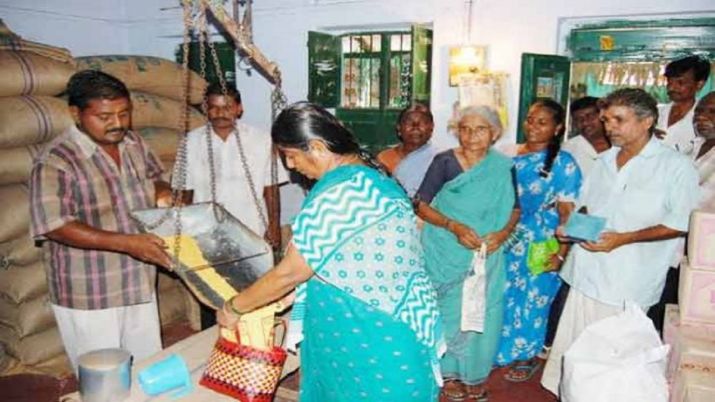NEW DELHI: The variations across states seen in the implementation of India’s Public Distribution System (PDS) — which supplies food and non-food items to the country’s poor at subsidised rates — may be attributed to factors like political leadership, electoral competition, and societal pressures, according to a new study.
The study, published in the journal World Development, assessed the implementation of the PDS in two relatively newly formed states in the country — Chhattisgarh and Jharkhand — which have similar demographic profiles, and development indicators, but different nutrition outcomes.
According to the researchers, including those from the University of East Anglia (UEA), the National Food Security Act (NFSA) of 2013 made India’s food security programme the largest in the world, and provided highly subsidised food grain to roughly 70 per cent of its population.
While both Chhattisgarh and Jharkand expanded the PDS, the developments in coverage post-NFSA was greater in Chhattisgarh compared to that in Jharkhand, the researchers said.
Chhattisgarh undertook comprehensive reforms to make its PDS a nationally lauded model, but Jharkhand’s reforms were patchier in comparison, they explained in a statement.
The findings revealed that three sets of interrelated factors influenced the goals pursued by the political leadership while prioritising PDS.
One of the factors was the nature of political-electoral competition, the second was the kinds of pressures exerted by influential societal groups, and the third one was how the leadership enabled the uses of bureaucratic capacity.
Through the study, the scientists were also able to understand a key difference between the two states.
While Jharkhand’s demand for statehood emerged from a strong mobilization of its tribal population, Chhattisgarh lacked a comparable movement, they said.
The researchers sought to explain why Jharkhand’s political elite were not able to drive the social policy agenda, and serve the interests of its core constituency the way that Chhattisgarh’s upper caste leadership could.
Based on the study, the researchers said the answer is rooted in the social and electoral drivers of the state’s developmental orientation.
In Chhattisgarh, they said, close competition between two national parties built considerable pressure on the ruling party to deliver on its poll agendas in response to the demands of powerful interest groups, like farmers.
However, in Jharkhand, despite considerable Adivasi political influence, the state’s repeatedly fractured political mandates, and the lack of internal party unity were not enabling in the same way as it was in Chhattisgarh.
While in Chhattisgarh, stable political rule was conducive to sustained bureaucratic reform, in Jharkhand, this was never prioritised by short-lived governments, the study noted.
According to the researchers, the Chhattisgarh bureaucracy’s greater responsiveness to judicial intervention, and civil society pressures that followed was predicated upon this.
Adding to this, they said, even though civil society mobilization in Jharkhand had a richer legacy, the state’s political leaders were less effective in leveraging the bureaucracy to introduce PDS reforms.
Even though the political leadership in both states engaged in high-level and high-stakes manipulation of public policy for high-profit returns, the study said the tenure stability of elected representatives in Chhattisgarh led to a steady supply of profits, particularly in the extractive sector.
The researchers believe this allowed Chhattisgarh to prioritise some areas of developmental reform, which was not the case in Jharkhand, where short-lived governments indiscriminately engaged in pervasive profit-making from manipulated policies.
While the functionality of PDS was greatly improved in Chhattisgarh, tackling many areas of its reform, this could not be achieved in Jharkhand to the same extent, the researchers said.
According to the researchers, the findings not only confirm that political leadership is an important factor for the prioritisation of welfare, but also provide further understanding of the conditions in which the elected leaders may act to promote developmental objectives.
“We hope that the analysis will be useful beyond the particular case of these states, or even the PDS system in India. We seek to advance the understanding of the many guises of the welfare state,” the researchers wrote in the study. (AGENCIES)
Trending Now
E-Paper


